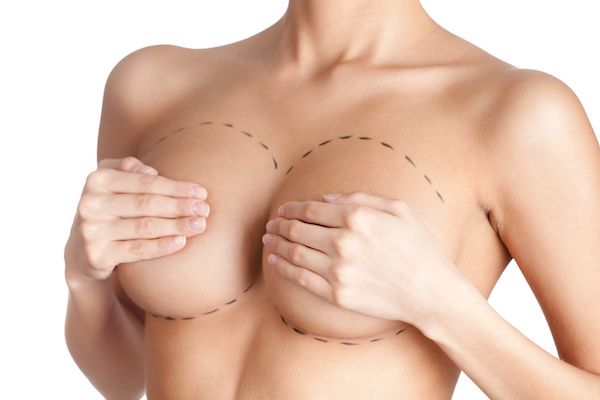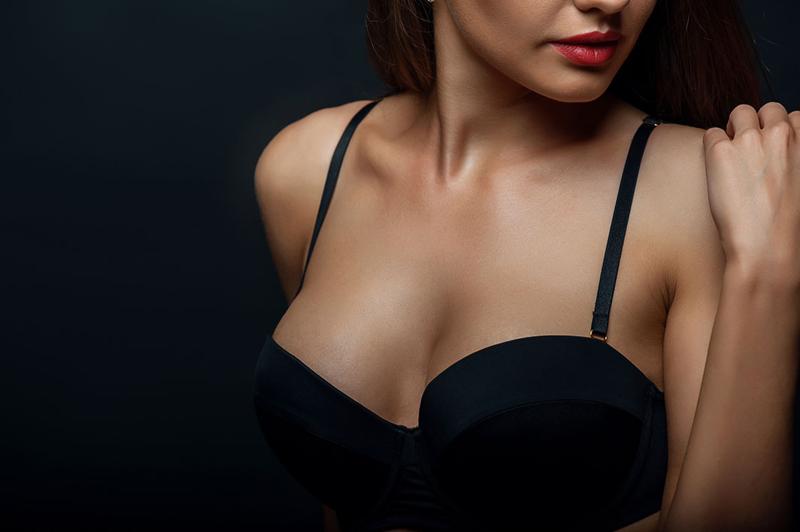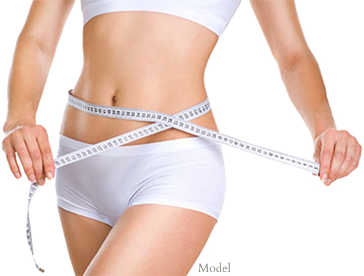
A breast reduction is a cosmetic procedure that reforms the breasts to a smaller size, helping improve body proportions and the associated problems of having large, heavy breasts. Many women have issues with back pain due to this excess weight on their chest. Though more comprehensive breast reduction procedures are popular, it is possible to attain the same transformative results solely with liposuction.
Liposuction only removes fatty deposits of the breasts, leaving essential glandular tissue intact. Not only can this alternative procedure be safer, more affordable, and comfortable, but it will not create long, noticeable scars on the breasts. In many situations, surgeons can complete it using just local anesthetic in under two hours of procedure time.
To find out if you qualify for a liposuction breast reduction, visit Denver Liposuction Specialty Clinic. Since 2007, our practice has introduced thousands of patients to the incredible, body-sculpting effects of liposuction. Our prioritization of patient safety separates us apart from the rest, helping us create high-quality results for patients seeking the enhancements they desire.
Get in touch with our office by calling (720) 372-2155 or using our contact form, and a member of our team will help you schedule your consultation.
Contents
About Breast Tissue and Breast Reduction
The breasts are a central part of the feminine appearance and can greatly affect how a woman feels about her body. Unfortunately, it is not uncommon for women to feel dissatisfied with the size of their breasts; both overly small and large breasts can be a disheartening situation. With excessive breast tissue, women can not only experience insecurity, but it can get in the way of mobility and exercise. Chafing and sweating can also create an environment for embarrassing and irritating skin rashes to develop.
The breasts are made up of several types of tissue, giving women the ability to breastfeed. Glandular tissue consists of lobules for milk production and milk ducts to transport the milk to the nipple. Bands of collagen are also present, providing support for these structures. However, the fat tissue of the breast determines the total breast shape and size. (1) The tissue composition of a woman’s breasts depends on her genetics, weight, age, and whether or not they have had a child.
During a standard breast reduction- or reduction mammoplasty- surgeons remove skin, fat, and glandular tissues to improve contours and create a more aesthetically pleasing size. The process often damages the milk ducts and can take away the future ability to breastfeed. Not only that, but one study showed that around 34% of women who underwent reduction mammoplasty experienced some type of complication related to infection or seroma (fluid buildup under the skin). (2) While these were not serious complications, they can sometimes make for a longer, more burdensome recovery. With or without complications, most women’s surgical scars do not fade significantly until at least a year into their recovery.
Benefits of Breast Reduction with Liposuction
Patients can expect the following benefits:
- Liposuction only requires incisions of about a centimeter or less.
- Patients can avoid the need for general anesthesia and its associated risks.
- It offers patients a safer, more cost-effective alternative to a reduction mammoplasty.
- It is a highly effective method of body sculpting in almost any area of the body.
- The procedure can correct issues of asymmetry between the breasts.
- Surgeons can reduce large breasts by one or two cup sizes, helping reduce back pain and other discomforts.
- With VASER liposuction, a method that utilizes ultrasound to break fatty deposits more efficiently, patients can expect an even quicker recovery with less discomfort.
- Surgeons can purify the collected fat and perform a Brazilian butt lift for further aesthetic enhancement.
- Surgeons can preserve nipple-areola sensitivity and the surrounding nerves.
- The recovery time is much shorter than a traditional reduction mammoplasty.
Candidates
Your surgeon at Denver Liposuction Specialty Clinic will review your candidacy during your complimentary consultation, but in general, you should:
- Have excess breast volume or asymmetrical breasts you would like to reduce
- Be at a stable weight and in overall decent health
- Your breasts should not be saggy and nipples should point out
- Be at least 18 years of age
- Be a non-smoker or able to quit temporarily
- Not be a nursing mother
- Have relatively healthy skin that can recoil well after fat removal
- Have realistic expectations for the procedure
Personal Consultation
When you schedule a consultation at our Englewood location, we will arrange for you to speak with a patient coordinator who can go over the specific details of liposuction with you. You will have a chance to discuss your medical history and any current medications you are taking. They will ask you about your goals for breast reduction and thoroughly evaluate your candidacy for surgery, ensuring that they thoroughly consider all safety factors. They may review the preparation and recovery process so that you receive the proper education you need.
If interested, you can inquire about a mommy makeover which may include a Brazilian butt lift, Lipo 360, tummy tuck, abdominal liposuction, or FUPA liposuction. Regardless of your procedures of choice, you will have a complete understanding of their personalized treatment plan by the end of this first appointment.
If you feel ready to take the next step toward attaining more confidence with your breasts, we invite you to get in touch with us by calling (720) 372-2155 or filling out your information with our online form.
Procedure Steps
To begin the procedure, your surgeon will first administer oral sedation so that you will be aware of the procedure but in a relaxed state of mind. They will then desensitize specific areas of the inframammary fold, the lower breast fold, with a local anesthetic. Depending on the size of each breast, they will make one or two tiny incisions– just enough to insert the slim liposuction cannula, a tube-like tool that enters just under the skin. Then, they will infiltrate the breasts with a solution called tumescent fluid, allowing the fat tissue to properly engorge and separate from surrounding connective tissues. The fluid also numbs these subcutaneous tissues and serves to restrict blood loss. Then, your surgeon will use a suction cannula and apply back-and-forth movements within the breast to remove the targeted deposits. The result will promote shapelier, perkier breast contours.
VASER Liposuction
With VASER liposuction, your surgeon can apply a cannula-like VASER (vibration amplification of sound energy at resonance) probe to more precisely break apart molecular bonds between fat cells, creating a “liquefying” effect in the targeted fat. VASER accomplishes this by emitting ultrasound energy, a type of vibrational acoustic energy. With this technology, you can expect less damage to blood vessels and nerves, further facilitating a shorter recovery time.
Recovery and Results
After liposuction, you may have some minor bruising and swelling, but you should be able to go back to your daily activities within just a few days. Although you should try to refrain from highly strenuous activity work for at least three to two weeks, you should try to take light walks to promote good blood flow throughout your body, helping you heal faster. Within just 4 to 6 days, you should be able to resume light activity exercise. During your recovery, you should also:
- Eat a healthy diet with plenty of fruits, vegetables, protein, and non-processed foods
- Stay adequately hydrated
- Get enough sleep
- Follow all instructions for prescription medications
- Exchange the breast absorption pads and clean the incision sites with soap and water once or twice a day. Applying iodine can also reduce the chances of infection
- Wear your compression garment at all times (except when showering) for 3 4 to 12 weeks after surgery
- Avoid baths or swimming until your surgeon says it is safe to do so
- Avoid applying hydrogen peroxide or band-aids to the incision sites
- Avoid using heating pads or cold compresses
- Schedule a follow-up appointment with your surgeon to find out when you can return to the gym.
You should be able to enjoy your final results once all swelling subsides and you can go without your compression garment; it will usually take about 4 to 12 weeks.
Corresponding & Complementary Procedures
Brazilian Butt Lift
A fat transfer procedure incorporates liposuction techniques, but there is an added element in which your surgeon can readminister your fat in a different area. One of the most popular fat transfer procedures is the Brazilian butt lift, giving individuals the opportunity to utilize their all-natural fat to accentuate an hourglass figure. If you are undergoing a breast reduction, your surgeon will store the fat from your breasts, purify it, and strategically inject the deposits into the buttocks with a cannula. The final results will promote a rounder, more projected buttock appearance.
Cost of a Breast Reduction in Denver

The cost of your breast reduction will mostly depend on how surgical fees, anesthesia fees, follow-up appointments, postsurgical medications, and the extent of the changes involved. During your complimentary consultation, we will provide you with a detailed quote that takes into account all of these factors. The associated costs will all contribute to a high-quality outcome that you can feel proud of for many years to come.
If you would like to learn more about Denver Liposuction Specialty Clinic and our various procedure options, browse through our blog. You can also get started today by calling our staff at (720) 372-2155 or requesting an appointment online, and we will gladly get back to you as soon as possible.
References
- Geddes DT, Gridneva Z, Perrella SL, et al. 25 Years of Research in Human Lactation: From Discovery to Translation. Nutrients. 2021;13(9):3071. Published 2021 Aug 31. doi:10.3390/nu13093071
- Palve J, Kuuskeri M, Luukkaala T, Suorsa E. Predictive risk factors of complications in reduction mammoplasty—analysis of three different pedicles. Gland Surgery. 2022;11(8):1309-1322. doi:https://doi.org/10.21037/gs-22-116



